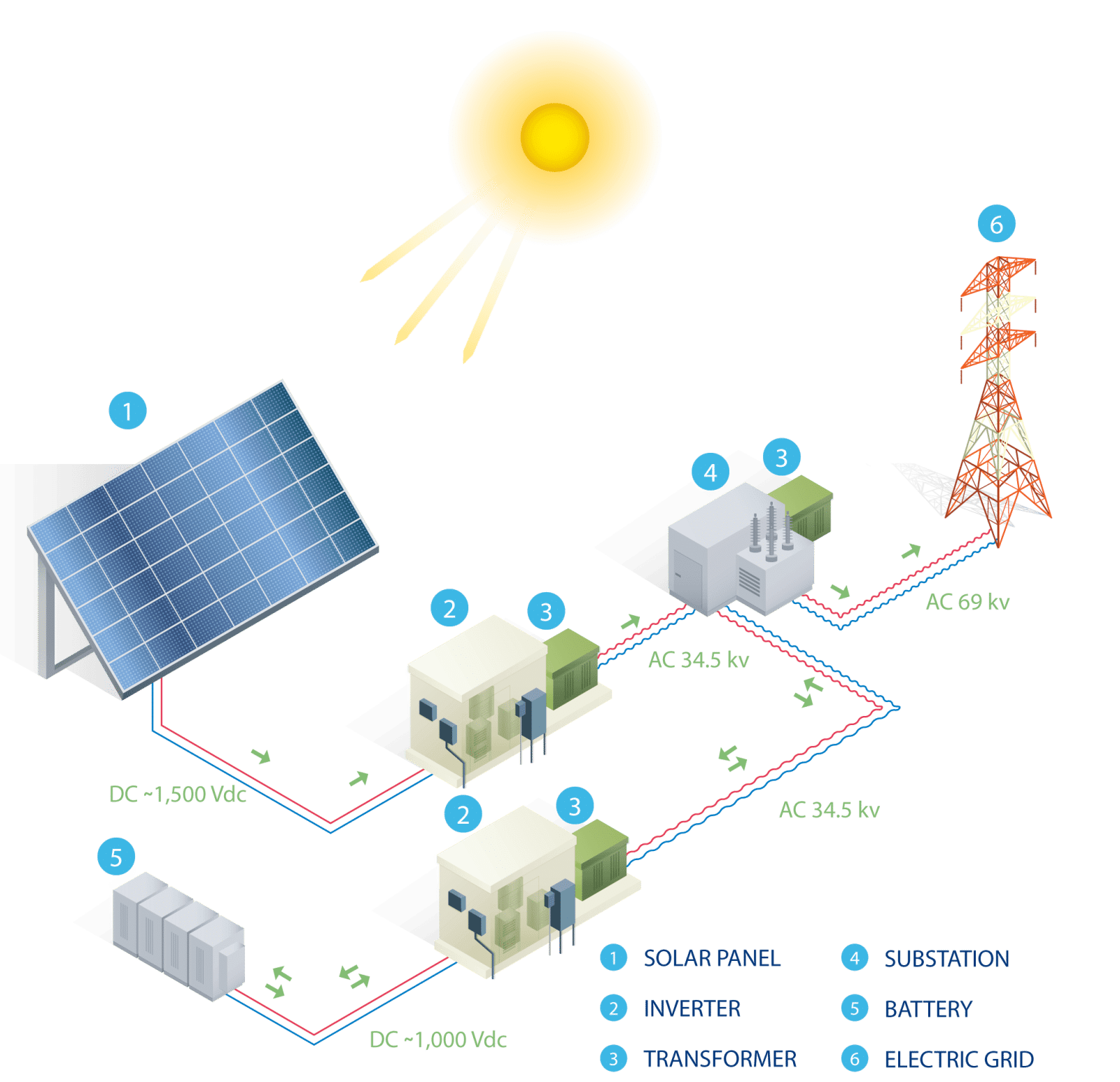On-grid Solar Power Plants
Solar energy, which hits the surface of the Earth, has a colossal power – solar radiation for a week surpasses all the currently known world reserves of fossil oil, uranium and coal combined. Solar panels (photovoltaic modules) convert the energy of solar radiation into alternating current, which is then fed to the power grid. Grid (that is, connecting to tte grid, on-grid) solar photovoltaic systems can be used both to generate environmentally friendly electricity for the purpose of further sale to the grid at a green tariff, and to generate electricity for own consumption.
On-grid solar power plants are one of the most common types of photovoltaic systems designed to generate electricity with its subsequent transfer to the external grid. Most often, the electricity generated by a grid-on solar power plant is sold to a third-party buyer, for example, by a “green” tariff, a market price or a price set in a special “green” auction. On-grid solar power plants are divided by their design into ground, rooftop and facade. They can use either a fixed placement of solar panels, or use moving support structures that allow the surface of the solar panels to be oriented in the most optimal direction in relation to the sun. On-grid solar power plants can also be divided into large industrial (average power up to 1 MW and more powerful – from 1 MW) and smaller private (usually their capacity does not exceed several tens of kilowatts).
On-grid photovoltaic power system consists of the following components:
- Solar modules. It generate DC electricity.
- The supporting steel structures for placing solar panels on the ground, roof, etc.
- Power inverters that convert the direct current (DC), generated by the solar panels into alternating current (AC).
- Transformer substations. They are necessary for converting (increasing) the voltage from the output of the inverters to the voltage level in the external network.
- A monitoring system to control the parameters of the solar power plant.
- Measurement units to monitor the performance of the system and control the amount of electricity to sell it using the “green” tariff.
- Centralized grid and transmission line, which is connected to a power station.

The main advantages of network solar power plants are:
- The use of free, renewable energy, practically available in unlimited amounts, – solar radiation, which, among other things, has no need to deliver to the place of electricity generation.
- High reliability – Modern solar panels can be efficiently operated for 25 years. In addition, the station does not have moving / rotating parts, which are particularly not wear-resistant and require replacement.
- Low operating costs – a modern solar power plant is characterized by a high degree of automation of all processes, and therefore requires a minimum number of service staff.
- Maintenance of the solar PV stations for the plant’s efficiency support is very low-cost and does not require the carrying out of labor-intensive expensive operations.
- The possibility of using not only free space for the construction of a solar power plant but also one that is used inefficiently or not at all, such as the facades and roofs of buildings that allows not only saving the territory, but also significantly reduces investment in the construction of the solar power plant.
- The amounts of generation of electricity several times exceed those that were spent on its production.
- The high speed of return on investment – investments in solar power pay off faster today, than in the oil and gas industry.